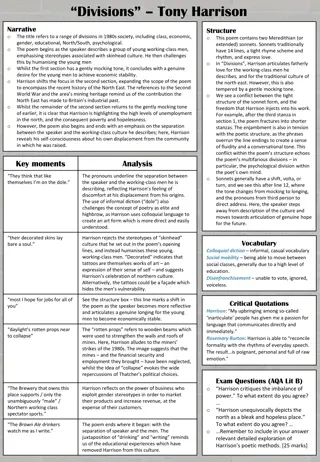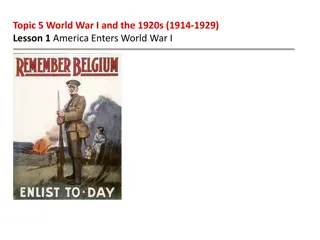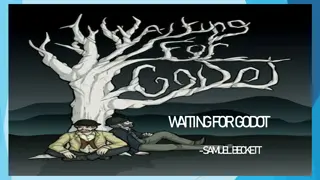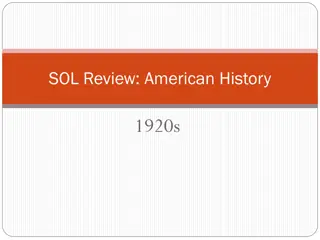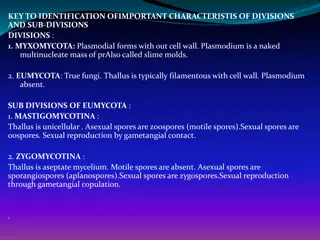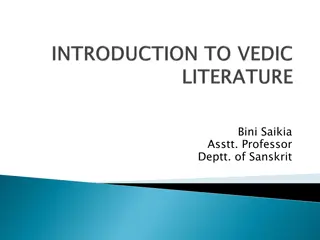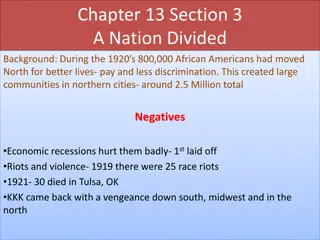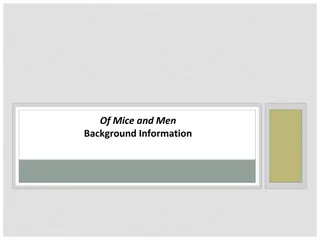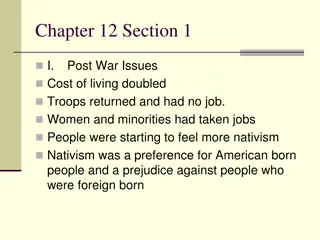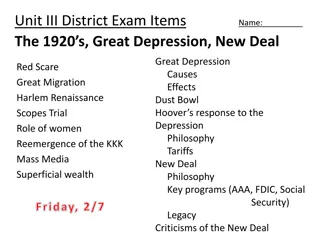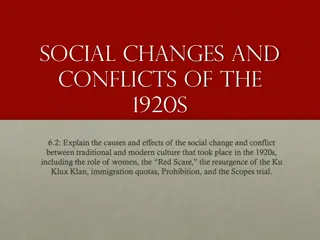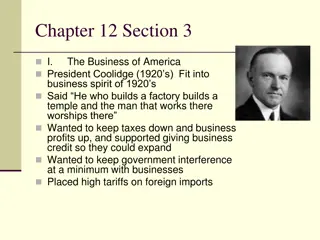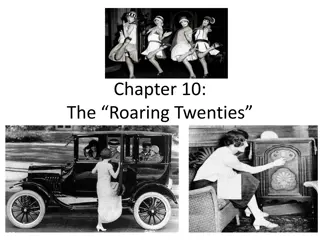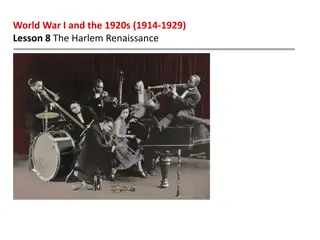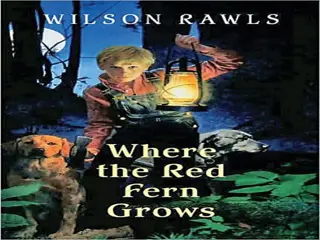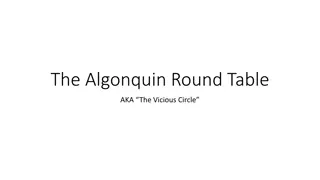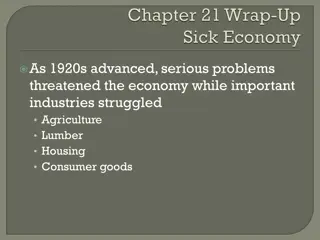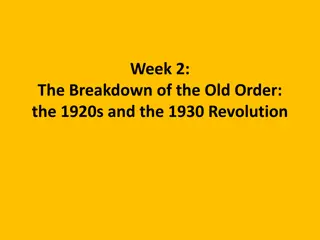Social Divisions in 1920s America: Traditionalists vs. Modernists
In the 1920s, American society was divided along social, economic, and religious lines, leading to tensions between traditionalists and modernists. Traditionalists upheld long-held cultural and religious values as anchors of stability, while modernists embraced new ideas and trends, viewing traditional values as limiting individual freedom. This division was evident in debates over urban vs. rural lifestyles, changing views on courtship and dating, and the contentious issue of prohibition. These conflicts reflected broader societal changes and cultural clashes during the Roaring Twenties.
Download Presentation

Please find below an Image/Link to download the presentation.
The content on the website is provided AS IS for your information and personal use only. It may not be sold, licensed, or shared on other websites without obtaining consent from the author. Download presentation by click this link. If you encounter any issues during the download, it is possible that the publisher has removed the file from their server.
E N D
Presentation Transcript
TRADITIONALISTS VS. MODERNISTS Unit II the 1920s Essential Question: How did social, economic and religious tensions divide Americans during the 1920s?
Essential Question How did social, economic and religious tensions divide Americans during the 1920s?
DO-NOW QUESTIONS 12/01 What is social Darwinism? What is evolution? What is creationism?
Who are the traditionalists and modernists? Traditionalist = a person who has deep respect for long- held cultural and religious values They believe these values are the anchor that provides order and stability in society Modernist = a person who embraces new ideas, styles and social trends. They believe traditional values restrict individual freedom and happiness MAIN IDEA: In the 1920 s there was a culture war between those who believe in traditional values vs. modern beliefs.
TITLE: Urban & Rural America The traditionalist thinks new ideas and behavior should be viewed with suspicion. they are defending all that is good in America. City culture is money- grubbing, materialistic, and immoral. The Modernist thinks cities provide the most economic opportunity. cities provide more freedom to think and live. rural America is behind the times. Points of Contention Many people started to move from small towns to cities By 1920, more than 50% of the public lived in urban areas Cities became the center of economic growth
TITLE: The traditionalist thinks laws should be passed to limit what women could wear. the purpose of courtship is to lead to marriage. that young people are reckless and immoral. the censorship of ideas is okay The Youth & Adult Perspective The Modernist thinks flapper culture should be embraced. the new fads were the cats pajamas. the purpose of dating was to just have fun. their parents are just nagging them and behind the times. Points of Contention Courtship (dating) changed dramatically Increase in public education & college enrollment Emergence of the flapper
TITLE: The traditionalist thinks alcohol causes crime, violence and the breakup of families. No alcohol will lead to a healthier, happier America. stopping alcohol will lead to less influence from foreigners (Germans and Italians) Ken Burns Two Americas Debate over Wet & Dry The Modernist thinks prohibition violates individual liberty. Gov t is trying to overly regulate people. traditionalists are ignorant. the religious argument made by traditionalists is flawed. Points of Contention Enforcing prohibition (the 18th Amendment) was very difficult Support for prohibition was mainly rural areas At first, prohibition seemed to be a success, but opposition grew Repealed by the 21st Amendment
TITLE: Creationism & Evolution Scopes - PBS The traditionalist thinks creationism should be taught in schools, not evolution. evolution will lead to the acceptance of social Darwinism. laws, like the Butler Law in Tennessee, should be supported. The Modernist thinks evolution and natural selection should be embraced. religion and science can co-exist. people should look at science instead of religion to explain the modern world. Points of Contention By the 1920s, evolution was regularly taught in many schools. Evolution vs. Creationism The debate was highlighted during the Scopes Monkey Trial.
Tennessee Law: 1) Banned Teaching of evolution or anything against divine creation John T. Scopes Taught evolution in class
William Jennings Bryan F U N D A M E N T A L I S T S - Prosecuting lawyer - Former Pres. Candidate - Christian & Pacifist - Emotions Supporters - Anti-evolution - Rural America - Bible is literal
Clarence Darrow - Defense lawyer - Agnostic - Not religious - Logic M O D E R N I S T S Supporters - Law is unjust - Freedom of speech - Science - New ideas
Scopes was found and GUILTY FINED $100 Evolution pushed out of schools for years Discussion Question: How does the trial represent the cultural divide of the 1920s?
Practice Quiz Traditionalism Modernism 4) Support only religious teaching 7) Young people are reckless and immoral. 1) Associated with rural America. about creation. 8) Flappers and fads should be embraced. 5) Believe alcohol is the root of 6) Associated with cities. 3) Believe restrictions limit liberty. 2) Associated with younger people. many societal problems.


